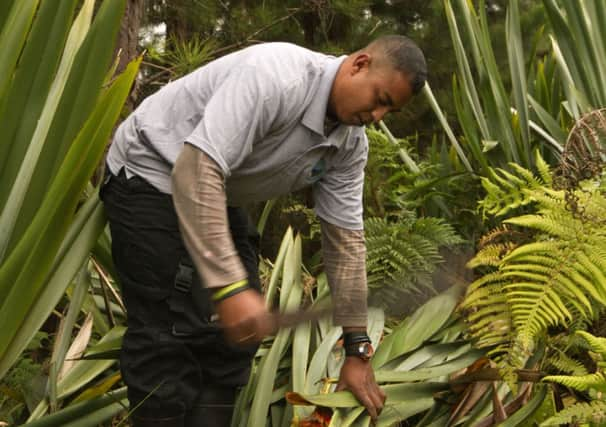Yorkshire ecologist now our man in St Helena


But this will change in 2016 when aircraft will begin to land at the new airport now under construction, bringing with them thousands of tourists to the British territory in the South Atlantic – a development it is hoped will transform the island’s economy and future.
But the change presents a major challenge to one Yorkshireman who lives on the island and is part of a team tasked with protecting the hundreds of species of animals and wildlife which can only be found in St Helena.
Advertisement
Hide AdAdvertisement
Hide AdDave Higgins, who was born in Hull, has lived and worked around Yorkshire including jobs for Defra in Leeds and for the Yorkshire Dales Rivers Trust.
However, his latest conservation job has taken him to a more exotic location on the other side of the world as he looks to safeguard the future of various “endemic” species – those which can be only be found in one place.
He said: “St Helena can currently only be reached by ship which takes five days from Cape Town or two days from Ascension Island.
“Sometimes it can be just one ship a month.
“This will change in 2016 when an airport opens on Prosperous Bay Plain. This will be a major event in the island’s history.”
Advertisement
Hide AdAdvertisement
Hide AdMr Higgins said the development of the airport created two risks for conservationists both in terms of the loss of natural habitat because of construction work underway and also the large increase in the numbers of people likely to be on the island as the result of the regular air travel.
He said: “St Helena could well be a mecca for eco-tourists.
“The projections suggest tourism will peak at 30,000 per annum by 2022 from a less than a 1,000 per a year which we have at present.”
Mr Higgins has been tasked with writing plans for 14 national conservation areas, include national parks, nature reserves and important wirebird areas.
Advertisement
Hide AdAdvertisement
Hide AdHe said that in some cases he was dealing with rare species which could be at risk of extinction
“St Helena is renowned for its unique and numerous endemic plant and invertebrate species.
“These include the bastard gumwood tree, a cloud forest tree fern, the spiky yellow woodlouse and the golden sail spider.
“Many of these are critically endangered.
“The island’s history since discovery has been one of extinction with numerous species having disappeared due to habitat loss and non-native invasive species. The wirebird is a small plover and is now the only remaining endemic bird species on the island.”
Advertisement
Hide AdAdvertisement
Hide AdHe told the Yorkshire Post the “museum rarity” of the place which conservationists are working in was both frightening and exciting.
He added: “The 823m high summit of Diana’s Peak, which is 50 hectares of mountain range, holds more endemic species than any European country while almost half of the invertebrates living in the islands’ national parks cannot be found anywhere else in the world.
“To date conservationists know of 200 species of endemic invertebrate just in the peaks. Some of these are reliant on a single tree species.
“Many of these trees are hidden on cliffs or in ravines.”
He added: “ Local conservationists tell me that if we lose one of our endemic plant species there could be a suite of invertebrate extinctions”.
Advertisement
Hide AdAdvertisement
Hide Ad“Little isolated hotspots of wonder are surrounded by a sea of invasive New Zealand flax.
“All around these biological jewels lies the threat of non-native species and habitat loss. The island’s wonder is under constant siege.”
Mr Higgins saw the job at St Helena advertised and was interviewed for it in London. His first journey to the island took a week as he flew from RAF Brize Norton to Ascension Island but then had to wait several days for the next ship heading on the two-day trip to St Helena.
It is a far cry from what the Yorkshireman had been used to before he took up the role.
Mr Higgins was born in Hull and lived around the region in Leeds, Hull, Cottingham, Ripon, Sutton Howgrave and Askrigg during his earlier career.